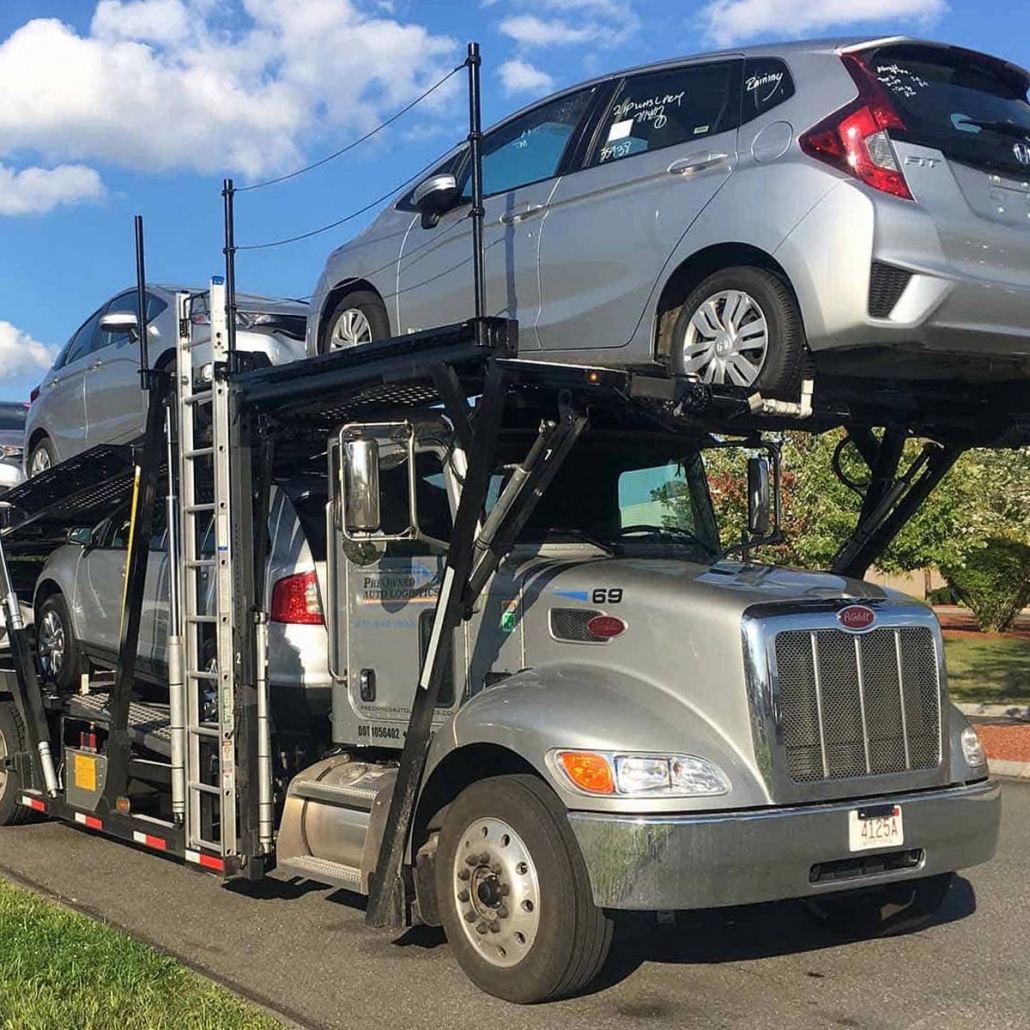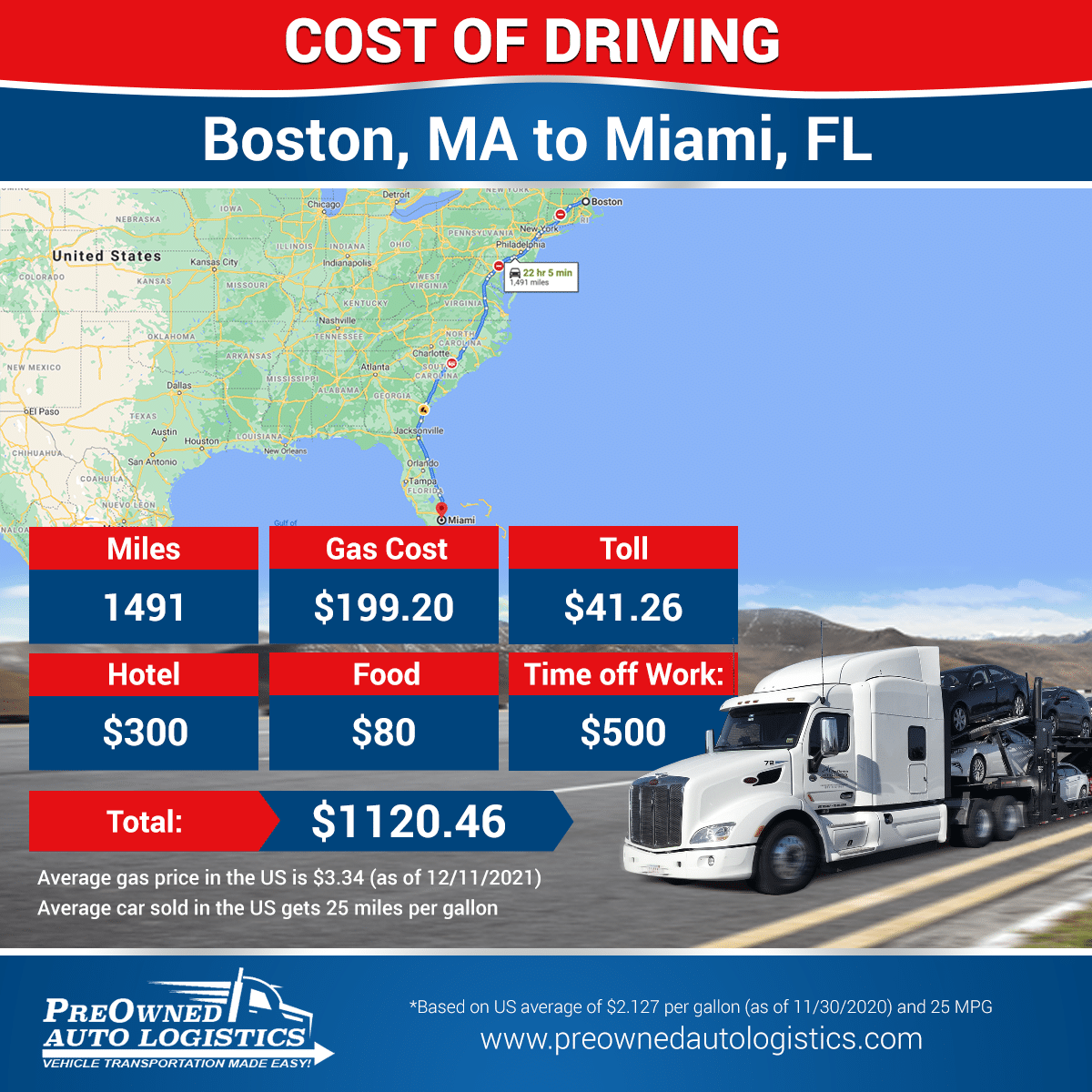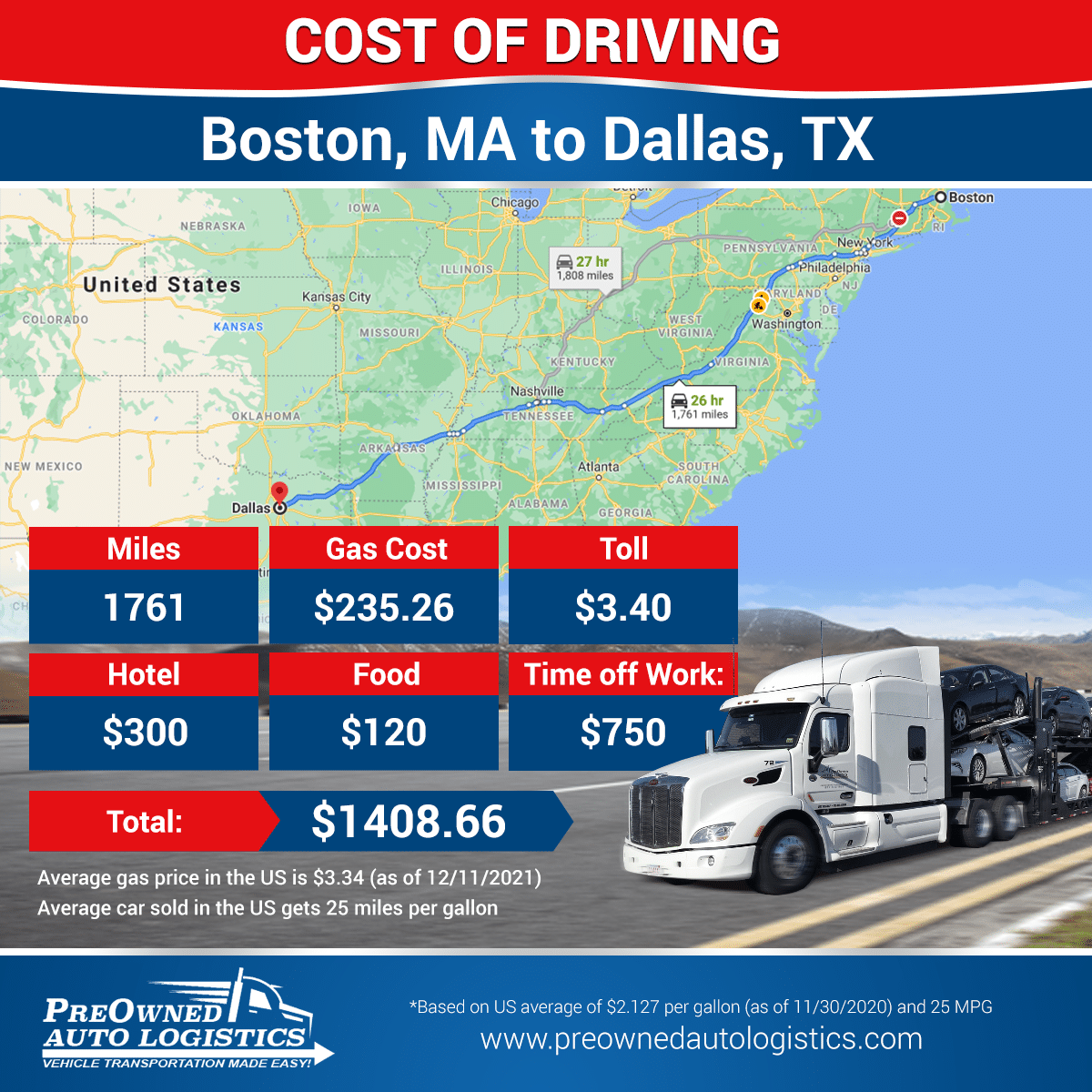The Cost of Car Shipping – Everything You Need to Know
Perhaps you’re thinking of spending your winters in warmer climates or you just got a job out of state, and you want to take your car with you because it’s cheaper than renting a car.
Maybe you’re moving with your family, and while the U-Haul was enough for all your stuff, you’re not sure how your cars are going to get to your new home.
What do you do? Drive it yourself or pay someone to do it?
It’s a tough choice.
In this comprehensive guide, you’ll learn all the factors that go into shipping a car including pros and cons of driving it yourself, or having someone drive it for you instead.
After reading this, you’ll have a better idea of which route is best for your situation.
Here are the 11 Common Factors that Affect the Cost of Shipping a Car
1. Location
The majority of the U.S. population live in urban areas, which means shipping or delivering a car to these areas are faster and cheaper, in general, compared to less populated areas.
Cars that need to be shipped off the beaten paths cost more, because it’s going to take more time for the truck to get off the main route to load it up and then get back on its way.
PRO Tip: Want to know if your car’s pick-up and delivery destination is on a popular route? Check out our featured routes page. But keep in mind that we can ship your car anywhere.
2. Distance
The longer the delivery distance, the more expenses the shipping company racks up in terms of truck use, driver labor, and fuel.
Short distance deliveries cost less than longer ones, but the price per mile goes down too.
For instance, the average cost to ship a car 500 miles is about $500 (e.g. Chicago to Kansas City). But the typical cost for a delivery from Phoenix to Dallas or about 1000 miles is just $750, not $1000.
Brandon Brown, CEO of consumer marketing firm GRIN, shipped his car from New York to California, and while he admits it wasn’t cheap, he felt it was the best option.
He adds, “I felt that it saved me time and money in the long run. I didn’t have to pay for gas, hotel fees, to-go food, or add unnecessary wear and tear to my car. It’s difficult not having a car for the time it’s in transit, but I was able to dedicate more time to work and not have to take off a week or more to drive across the country.”
3. Size of the Vehicle
Location and distance are easy factors to estimate. Size and vehicle weight is where it gets tricky, because car models vary greatly especially those with modifications.
Transport trucks have weight limitations, so heavier vehicles are charged extra because it limits the truck’s capacity to take in more cars. Plus, heavier loads lead to more gasoline consumption for the truck.
Estimate costs for transporting a sedan, SUV, large SUV or small truck
| Car type | Kansas City, MO to Dallas | Syracuse, NY to Orlando | Boston to Seattle |
| Sedan | $520 | $1060 | $1580 |
| Small SUV | $610 | $1195 | $1710 |
| Large SUV or truck | $730 | $1480 | $2076 |
4. Length and Height
Shipping companies already know how many cars they can fit on to one truck. Because of modifications, however, cars don’t always come in pre-determined sizes.
A typical sedan is about 189 inches long, which allows shipping companies to squeeze more cars on one load. Anything over 200 inches long is usually an extra charge.
Sedans are usually 57 inches high, while the larger SUV’s are about 73 inches. Tall SUVs cost more than the mid-size ones to transport because they force the shipping company to find compact cars that could fit under it, or else lose the potential income for not being able to find one more car that fits the remaining space.
Roof racks, large tires, trailer hitch attachments, and other accessories add to the length and height of the vehicle. Basically, anything that’s non-stock is considered an oversized vehicle and is charged extra because they consume space that would otherwise be used for another car.
How much extra is charged though? You won’t necessarily be charged for two spaces, that’s for sure. The demand for car shipping, weather, and the routes affect the final price, but in general you should expect to pay 30% more on average for an oversized car.
5. Ground Clearance
Cars with a low bearing set up that almost hug the ground cost more, because they’re more prone to damage. If your car has 4 inches or less ground clearance, it’s better to ship it in an enclosed truck.
6. Delivery Type: Open or Enclosed Trucks
Transport trucks for cars come in two options—open or enclosed. Both have pros and cons.
Open trucks are cheaper because they can fit in more vehicles and there are more open trucks available. The turnaround time for open truck deliveries are also faster, in general, because people prefer this more affordable option.
As it’s an open truck, your car will be exposed to the elements and road debris. The risk is low, however, and is usually covered by the car owner’s insurance.
Enclosed trucks, as the name suggests, protects your car from the elements. They cost about 30% to 50% more than open trucks because they can only fit up to six vehicles.
7. Market Conditions (Seasons) and Weather
Car shipping costs to Florida, California, Arizona, and Texas go up in the winter because of seasonal residents from northern states moving into warmer climates for the winter season.
February to March tend to be slow, as people are usually done with their moves by this time. But it picks up again in spring as the people want their cars shipped back to their primary residence.
Rough weather like snowed roads and storms, along with other factors, also affect car shipping costs, as this means the driver has to be extra cautious on the road.
8. Door to Door Delivery vs. Terminals
You can have your vehicle picked up and delivered right at your doorstep, or you can choose a nearby terminal.
Terminal pick up and deliveries are cheaper, but you also have to account for the cost of getting to and from the terminal. Some of these are far outside the city and they might charge a storage fee if you don’t pick up your car quickly.
Remember that door-to-door car deliveries aren’t always possible. The road might be too small, or in a gated community that doesn’t allow trucks. If that’s the case, you can always arrange a delivery point close to you, like a grocery store parking lot.
9. Insurance
Credible shipping companies include insurance in their car shipping quotation. Ask what that coverage includes, and if it comes with a damage deductible.
10. Inoperable cars
Non-operational vehicles need a winch to load it on to the transport truck—not all shipping companies have this equipment.
If your car is damaged but can at least be driven on and off the ramp to the carrier, that’s okay. If it’s totally inoperable, that will add an extra $150+ to your car shipping cost.
11. Delivery Time Flexibility
Car shipment costs rely a good deal on the company’s ability to coordinate deliveries and pickups through their route to maximize the truck’s full capacity. It takes about six to 14 days from pick up to delivery.
While you can certainly expedite the pick-up or delivery of your car, it’s going to cost you extra to incentivize the transport team to prioritize your delivery ahead of their schedule.
PRO Tip: Check out this FAQ for more information on shipping your car, such as if you can load personal items, if it’s insured during shipment, and how to prepare it for shipping.
Cost of Driving Your Car Instead of Shipping It
Now let’s take a look at the cost of driving it yourself.
Common sense suggests that it’s cheaper to drive your car than to have it shipped. After all, you’re going DIY and not paying for a service, right?
Turns out, it’s not that simple.
Listen to this Podcast episode with Sales Manager, Mike Scenna, about the cost of car shipping, or read the transcript.
Assuming a cost of $2.42 per gallon as per January 2021 market prices, according to the U.S. Energy Information Administration, and the following average expenses:
- Daily food: $40 per person
- Accommodation: $150
- Cost to take time off work: $250
| Items | Kansas City, MO to Dallas 511 miles 7.5-hour drive |
Syracuse, NY to Orlando 1,212 miles 18-hour drive |
Boston to Seattle 3,045 miles 45-hour drive |
| Time | 1 day minimum | 2 days minimum | 3 to 4 days |
| *Gas | $41 | $98 | $246 |
| Food per day | $40 per person | $80 per person | $120 to $160 |
| Accommodations | – | $150 | $150 to $600 |
| Time off work | $250 | $500 | $750 |
From Kansas City, MO to Dallas, it will cost $346 for one person to drive it and $386 if there’s a substitute driver. According to the cost estimates based on the car type above, having it shipped costs $520. That’s $200 in savings, but is it worth the hassle for you?
Now for the longer route of Syracuse, NY to Orlando FL, the cost for one lone driver is $828. If you have a co-driver to relieve you, it will cost $1408.
The cost of having it shipped is around $1060, still a $200 savings if you’re driving alone. If you take someone with you, you’re actually going to spend more to drive it yourself.
For the short trip, the $200 savings might be easier to justify. But for many who have families and busy schedules, this might not look like a good deal.
Aside from these predictable costs, you should also account for toll, wear and tear on your vehicle, the risk of getting into an accident and having to pay your insurance deductible, and fatigue for you and your co-driver.
What if Someone Else Drives Your Car?
Then, there’s also the option of having your car driven by someone else.
A family member, friend, or distant relative that might be traveling the same direction your car needs to head to.
A Quora user who goes by Lavanya, shared how she paid a guy to drive her camper. She only paid a fixed rate and the driver’s return flight, as the exchange allowed the driver to use their camper.
While it was cheaper than transporting the RV 1600 to 1700 miles, she admits that her camper got damaged a little bit in the process.
Mark Dougherty, a 70-year-old retiree who drives part time charges $10 per hour, plus expenses like gas, meals, a return flight, and $60 for his wife to drive and fetch him from the airport.
While most of his trips go smoothly, he insists that drivers should have their own insurance and roadside assistance. A truck he drove from California to Florida broke down three times and finally needed to be towed for the last five hours of the trip.
Yikes.
Who is liable for damages to your vehicle? What if an accident occurs?
There’s no definite answer as it differs per state. The state where the accident occurred and where the driver lives all affect how the incident will be treated by your insurance company.
In Florida, the insurance follows the vehicle first and the driver second. That’s why vehicle owners are responsible for harms and losses caused by entrusting their vehicle to someone else.
Florida Trial Lawyer Micah Longo says this is called a “negligent entrustment” claim.
Whether the permission to drive the car was implicit or explicit, the liability is still based on the ownership.
“Negligent entrustment should be covered under the vehicle owner’s auto insurance, so check your coverage first before allowing someone else to drive your car,” suggests Evan Walker Esq.
If you have someone else drive your car, and they get into an accident that your insurance couldn’t fully cover, you’ll be the one liable for damages and fees. It’s your insurance rates that will take the hit, too.
In Indiana, criminal acts such as an expired license or driving under influence (DUI), may cause exclusions that will allow the insurance company to not pay parts of a claim, says Scott Lynch, an insurance agent in Indiana.
An expired license or DUI may not be a concern if you’re entrusting your car to a professional driver. This can be a real risk if you’re entrusting your vehicle to friends or a traveler you found on an online travel forum or Craigslist.
Do the Math and Weigh the Pros and Cons of Each Option to Ship a Car
The choice of whether to ship your car, drive it yourself, or have someone else drive it for you isn’t always clear.
It all depends on your priorities. Do you want to save time and money, or do you want to take the scenic route?
What’s clear though, is that driving it yourself isn’t as cheap as most people think. There are hidden costs, so it’s up to you to weigh the pros and cons.
Plus, depending on your schedule flexibility and when your car will be shipped, it might even be cheaper to have the pros do it. Contact us to get a quote.







